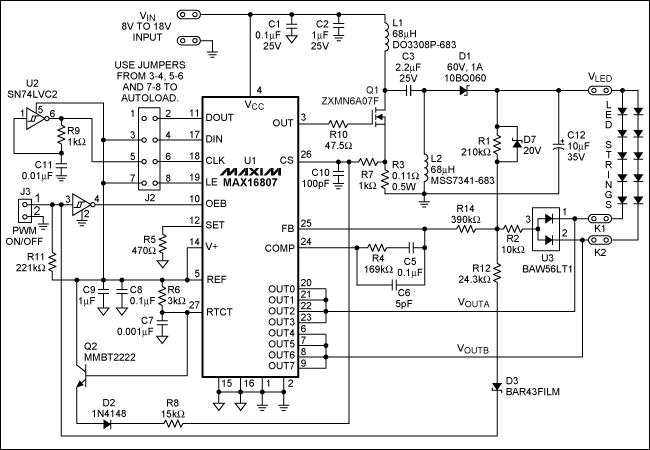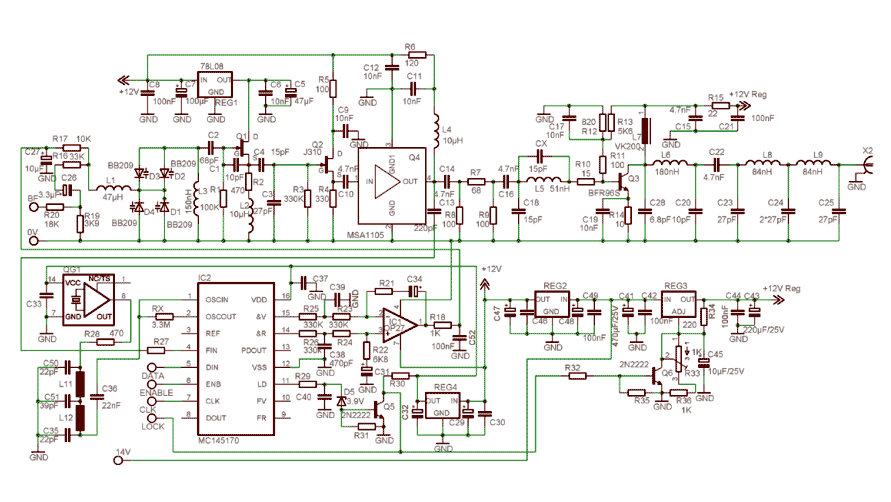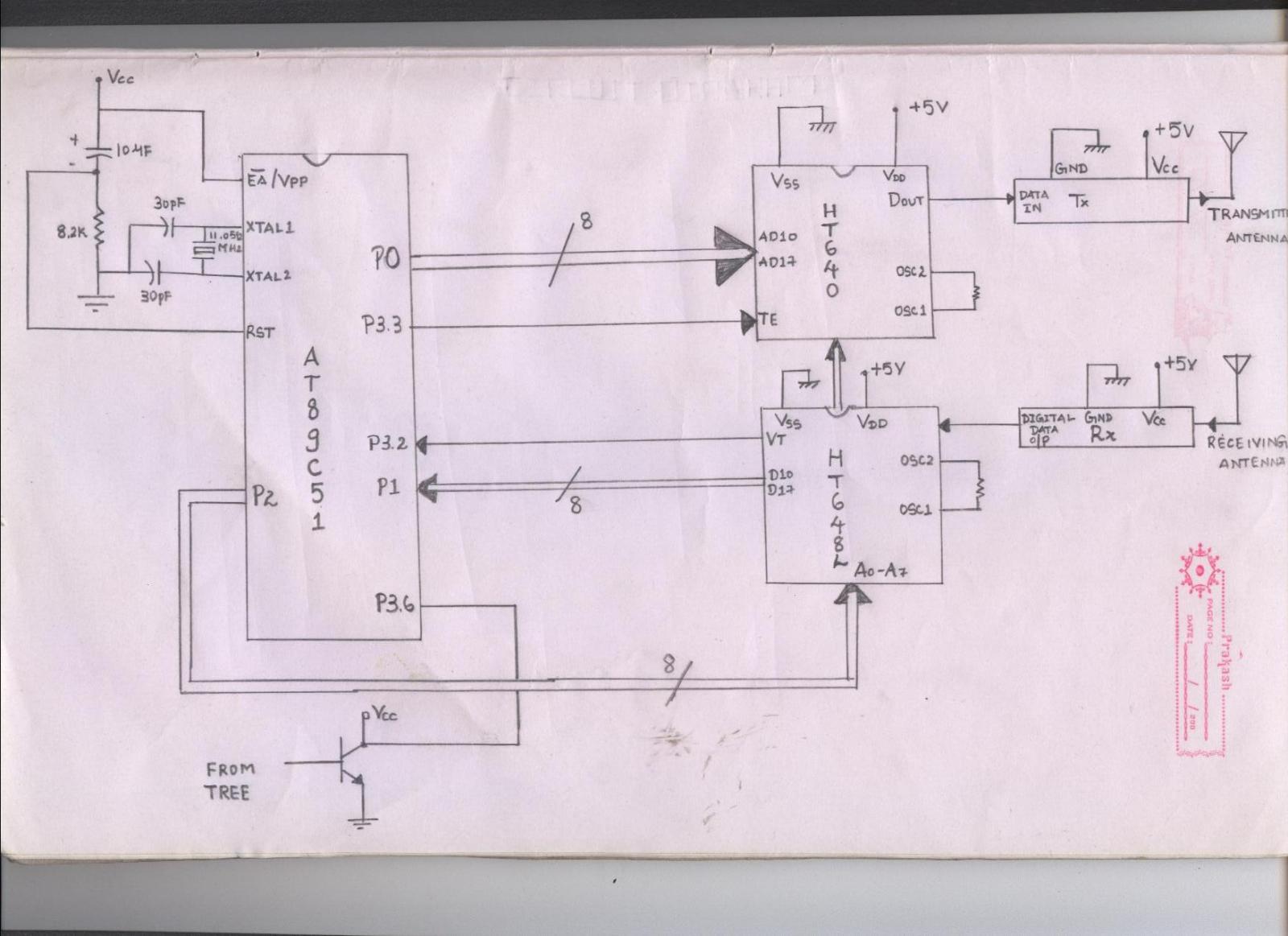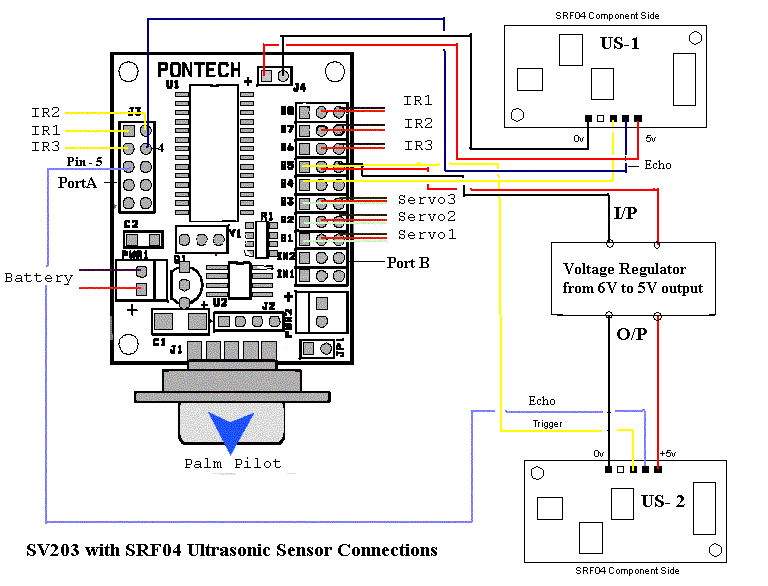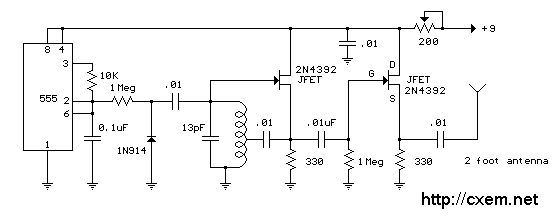
micro power am broadcast transmitter
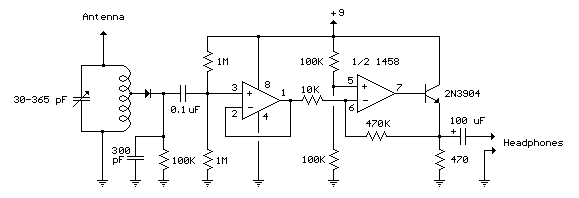
This circuit utilizes a 74HC14 hex Schmitt trigger inverter as a square wave oscillator to drive a small signal transistor configured in a class C amplifier. The oscillator frequency can be set to a fixed value using a crystal or made adjustable (VFO) through a capacitor/resistor combination. For VFO operation, a 100pF capacitor replaces the crystal.
The circuit operates by leveraging the characteristics of the 74HC14, which features hysteresis in its input thresholds, allowing for stable oscillation even in the presence of noise. The inverter generates a square wave output that alternates between high and low states, which is then used to modulate the base of the small signal transistor. This transistor, configured in a class C arrangement, operates efficiently by conducting for less than half of the input cycle, making it suitable for RF amplification applications.
In the fixed frequency configuration, the crystal oscillator provides a stable frequency reference, ensuring precise and consistent operation. When the circuit is set to VFO mode, the combination of the capacitor and resistor allows for frequency adjustments. The 100pF capacitor plays a crucial role in determining the oscillation frequency, which can be varied by changing the resistor value in the RC network.
The output of the small signal transistor can be connected to an antenna or further amplification stages, depending on the application. Proper biasing of the transistor is essential to ensure optimal performance and to prevent distortion in the amplified signal. Additionally, bypass capacitors may be included to filter out any high-frequency noise from the power supply, enhancing the overall stability and performance of the circuit.
Overall, this circuit design provides a versatile solution for generating square wave signals suitable for various applications in electronics, particularly in RF transmission and signal modulation systems.In this circuit, a 74HC14 hex Schmitt trigger inverter is used as a square wave oscillator to drive a small signal transistor in a class C amplifier configuration. The oscillator frequency can be either fixed by a crystal or made adjustable (VFO) with a capacitor/resistor combination.
A 100pF capacitor is used in place of the crystal for VFO operation.. 🔗 External reference
The circuit operates by leveraging the characteristics of the 74HC14, which features hysteresis in its input thresholds, allowing for stable oscillation even in the presence of noise. The inverter generates a square wave output that alternates between high and low states, which is then used to modulate the base of the small signal transistor. This transistor, configured in a class C arrangement, operates efficiently by conducting for less than half of the input cycle, making it suitable for RF amplification applications.
In the fixed frequency configuration, the crystal oscillator provides a stable frequency reference, ensuring precise and consistent operation. When the circuit is set to VFO mode, the combination of the capacitor and resistor allows for frequency adjustments. The 100pF capacitor plays a crucial role in determining the oscillation frequency, which can be varied by changing the resistor value in the RC network.
The output of the small signal transistor can be connected to an antenna or further amplification stages, depending on the application. Proper biasing of the transistor is essential to ensure optimal performance and to prevent distortion in the amplified signal. Additionally, bypass capacitors may be included to filter out any high-frequency noise from the power supply, enhancing the overall stability and performance of the circuit.
Overall, this circuit design provides a versatile solution for generating square wave signals suitable for various applications in electronics, particularly in RF transmission and signal modulation systems.In this circuit, a 74HC14 hex Schmitt trigger inverter is used as a square wave oscillator to drive a small signal transistor in a class C amplifier configuration. The oscillator frequency can be either fixed by a crystal or made adjustable (VFO) with a capacitor/resistor combination.
A 100pF capacitor is used in place of the crystal for VFO operation.. 🔗 External reference

